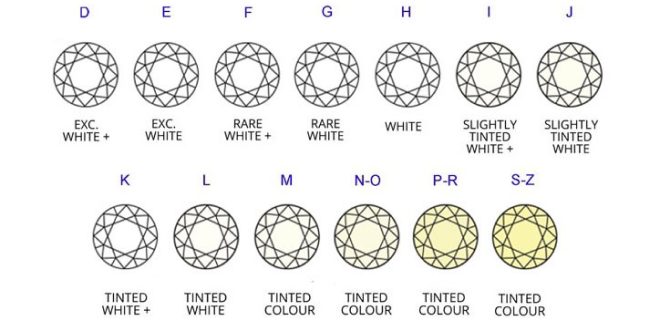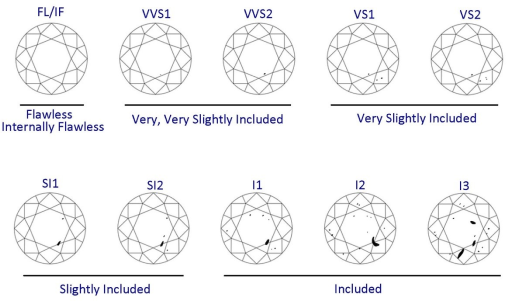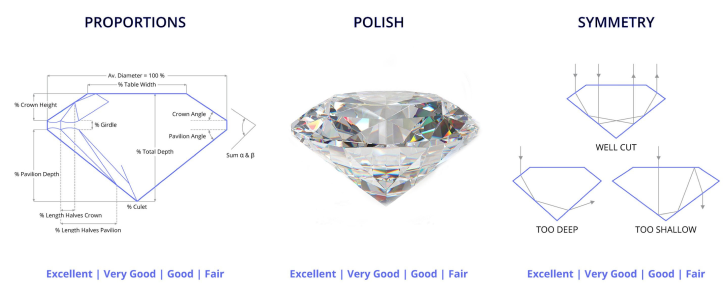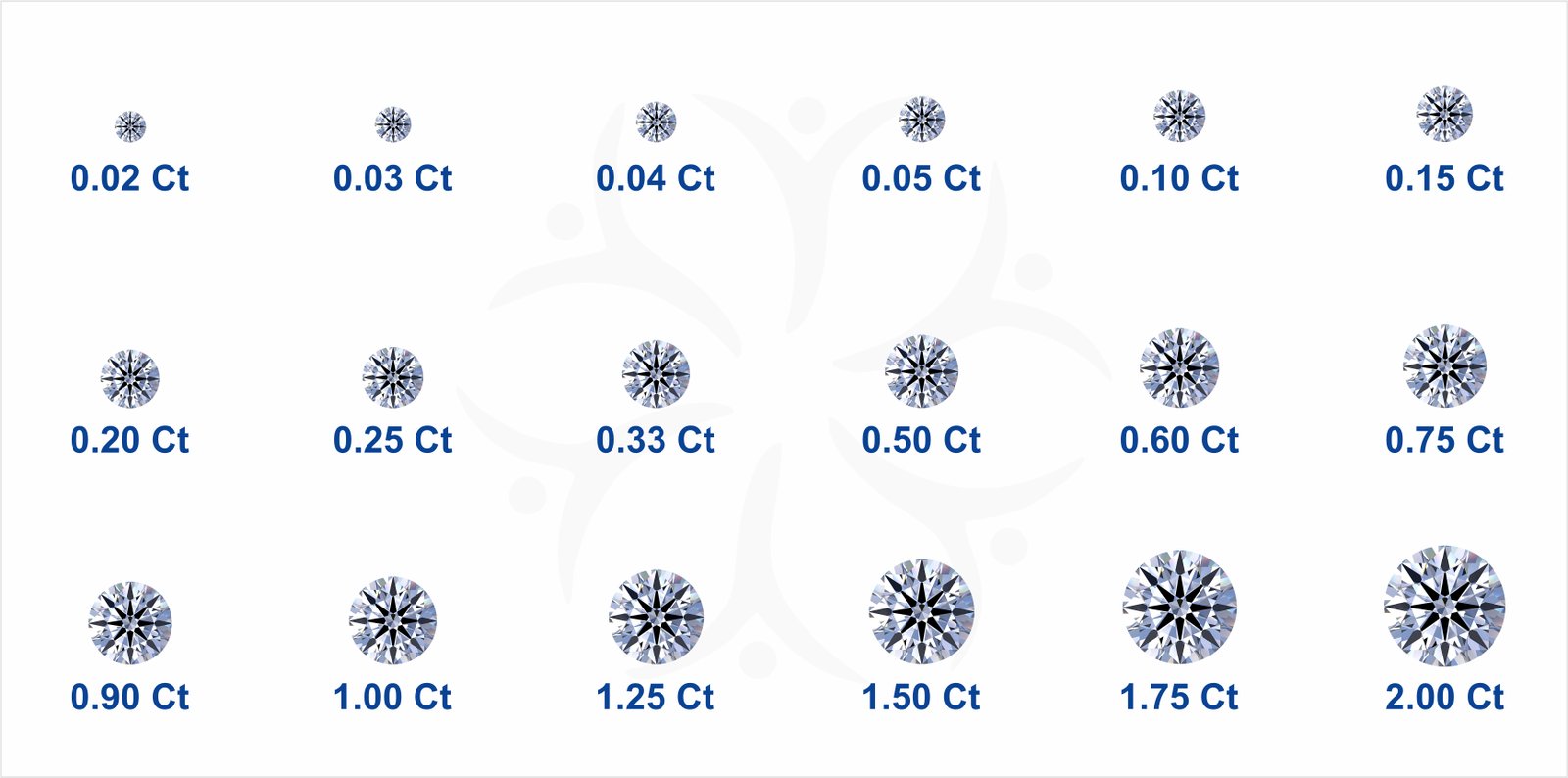
Diamond
- Home
- Diamond

Diamonds
Each diamond is one-of-a-kind, and understanding its value is straightforward. Diamonds are available in a wide range of shapes, sizes, and colors, and a structured approach is used to evaluate them. The quality of a finished diamond is primarily determined by the Four C's: Clarity, Color, Cut, and Carat Weight. These four factors together define the overall value of the diamond.
Color
Color refers to the evaluation of a diamond based on its level of whiteness. Two diamonds with identical cut, clarity, and carat weight can differ significantly in price due to their color. Colorless diamonds are particularly rare, making them more valuable. The GIA D to Z grading scale is the globally accepted standard for assessing the color of diamonds.

For those seeking flawless quality, diamonds graded D, E, and F are the ideal choice.
If you are looking for great value , diamonds graded G, H, I, and J provide excellent value with minimal or no visible color when viewed without magnification.
Clarity
Diamond clarity is determined by the presence or absence of inclusions and blemishes, with diamonds that have minimal imperfections receiving the highest grades. Inclusions refer to internal flaws, while blemishes are surface irregularities. Both of these affect the diamond's overall appearance once it has been cut and polished.
Diamonds graded as flawless have no visible inclusions or blemishes when examined under a 10X magnifying glass. The GIA Diamond Clarity Scale consists of six main categories, some of which are further divided, resulting in a total of 11 distinct grades.

Flawless (FL): No visible inclusions or blemishes when viewed under 10x magnification.
Internally Flawless (IF): No visible inclusions under 10x magnification.
Very, Very Slightly Included (VVS1 and VVS2): Inclusions are so minute that they are challenging for even a skilled grader to detect under 10x magnification.
Very Slightly Included (VS1 and VS2): Inclusions are visible with effort under 10x magnification but are considered minor.
Slightly Included (SI1 and SI2): Inclusions are noticeable when examined under 10x magnification.
Included (I1, I2, and I3): Inclusions are readily visible under 10x magnification and may impact the diamond’s transparency and brilliance.
Cut
The overall beauty of a diamond is influenced more by its cut than any other factor. The diamond's brilliance, scintillation, and dispersion are all determined by the precision and quality of its cut. The higher the cut grade, the more vibrant the diamond appears.
The GIA laboratory indicates that there are numerous variations and combinations of proportions that enhance the brilliance and fire of round brilliant cut diamonds. Diamonds cut into shapes other than round are referred to as fancy cuts. Some of the most popular fancy shapes include Princess, Pear, Oval, Heart, and Emerald.
A diamond with an excellent cut and proportions will have each facet carefully positioned and angled to ensure that the maximum amount of light is reflected from the top (crown) of the stone. This reflected light creates the diamond's scintillation, fire, and brilliance.
Cut Grade
Excellent – Reflects nearly all the light that enters the diamond, resulting in exceptional sparkle and brilliance.
Very Good – Reflects most of the light entering the diamond, offering a similar appearance to an excellent cut, but at a more affordable price.
Good – A great value option compared to higher cut grades. Reflects the majority of light, though the sparkle is somewhat lessened.
Fair – Allows light to escape from the sides or bottom, which reduces the overall brilliance.
Poor – Most of the light escapes from the sides or bottom, making the diamond appear dull and lackluster.

Carat
Carat refers to the physical weight of a diamond, measured in metric carats, with one carat equivalent to 200 milligrams. A carat can be further divided into 100 points; for example, a 0.25-carat diamond is referred to as a "Twenty-Five Pointer," while a 1.05-carat diamond is called "One Point O Five Carat."
The price of a diamond increases with its carat weight, as larger diamonds are rarer and more sought after. However, two diamonds with the same carat weight may have different prices due to the other three key factors—clarity, color, and cut. These four "C's" are crucial in determining a diamond's value, not just its carat weight.
